Melon Pests and Diseases: Complete Guide with Photos
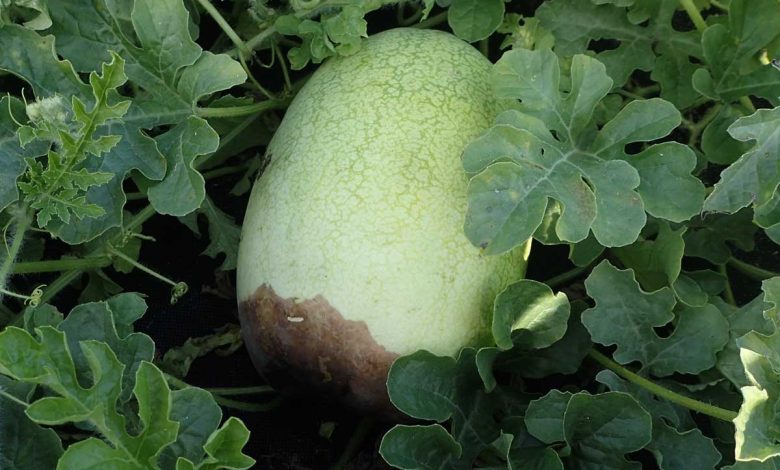
Hello to all agrohuerters! Today’s article will focus on the main pests and diseases that we can find in melons. Some time ago, our colleague Álvaro wrote an article on how to grow Piel de Sapo melon, so if you are interested, do not hesitate to take a look.

1. Melon pests
caterpillars on melon
It is a pest that mainly affects melons, but can also attack other species of cucurbits. They are light green, with two longitudinal white lines. To make its transformation to a pupa or chrysalis (the step before becoming a butterfly), it folds the edge of the leaves and protects itself inside.
The main damage caused by these caterpillars are:
- They devour the leaves.
- Fruit damage, leading to rotting.
- Greater effects in summer.
To control this pest, it is advisable to keep the crop and its surroundings free of weeds, use natural enemies (Apanteles sp, Eiphosoma insulares, etc.) and associate crops such as corn.
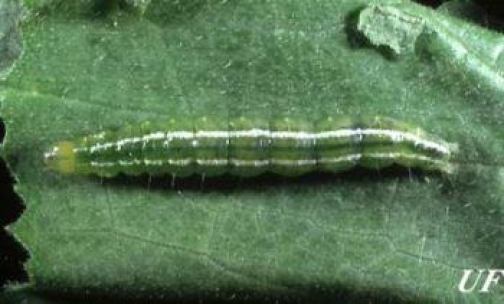
Plusia: another caterpillar that affects the melon
Plusia is known as a caterpillar of the Lepidoptera family. It mainly affects tomato, melon, bean, potato, alfalfa crops and also grapevines. It has a green color, with a yellow longitudinal line on each side.
The main damage is due to the defoliation caused by the caterpillars when they feed on the leaves. In the first larval stages, the caterpillar only eats the underside of the leaves, but as it grows it can make complete holes. Also, it can attack the fruit in some crops such as tomato.
Special attention must be paid in the nursery, when the seedlings are very small, since it causes serious damage.
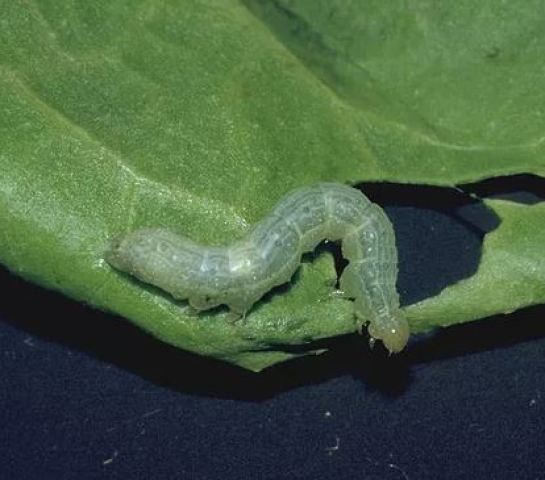
The main control methods are:
- Through natural enemies such as Cotesia plutellae or Copidosoma Floridanum.
- Place pheromone traps to monitor the population (approximately 3 traps per hectare).
- Remove affected plants.
whiteflies on melon
Whiteflies are generally located on the underside of leaves. What these small insects like the most is tomato, cabbage and cucurbits such as pumpkin, zucchini or melon. They like humidity and high temperatures, so they are a frequent pest in spring and summer (and very dangerous in greenhouses).
The main damages they cause to crops are:
- Extraction of sap from the plant.
- mechanical damage
- They produce molasses.
- Some species are disease vectors.
The best control method is prevention. Therefore, it is important that you check the underside of the leaves from time to time in order to act as soon as possible. In addition, there are various methods of whitefly control such as chromatic traps, natural predators, infusion of wormwood, garlic, etc.
Red spider on melon leaves
Although it is known as a spider mite, it is a species of mite. They are usually generalists and mainly affect vines, horticultural crops (zucchini, aubergine, etc.) or ornamental crops. They are located on the underside of the leaves and are identified by having dark spots on the sides and a large number of silks.

I leave you a link where we explain how to control the red spider.
2. Melon diseases
White spots on melon
Hatred is a fungus, also known as pigweed, white mal or white mold. It appears in the form of white spots and gradually transforms into a grayish-white powder. Thanks to that white powder, it is one of the easiest mushrooms to spot. It normally develops on the upper surface of the leaves, although it can also spread along the stem or the fruits. Their presence hinders photosynthesis. If we do not control it well, the leaves turn yellow and can dry out.
Humidity and warm temperatures are the ideal conditions for powdery mildew to appear in our garden.
In the following link you can read how to eliminate the hatred of plants.
mildew on melon
Another fungus that affects melons is mildew. It produces greasy-looking spots of different shades on the edges of the leaves or fruits, which then turn brown and wither.
Anthracnose, another fungal disease
The ideal conditions for this type of fungus are: high relative humidity (80%) and temperature between 20-30ºC. It is transmitted through rain or irrigation water. The main symptoms are yellowish lesions on the leaves, which can dry them out. Deep, rounded brown spots can be seen on fruits.
The most used control methods are:
- Crop rotation.
- Use resistant varieties.
- Remove damaged plants and pruning remains.
- Use certified seeds.
- Do not abandon the crops at the end of the cycle.
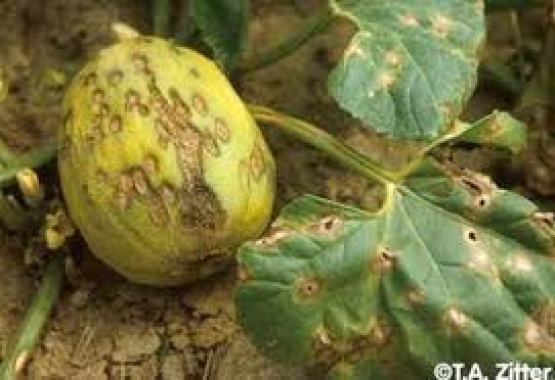
References
- Polak, E., Aebi, M., KÜES, U. (2001).Morphological variations in oidium formation in the basidiomycete Coprinus cinereus.MycologicalResearch. 105(5), 603-610.
- Li J, Liu X, Yang X, Li Y, Dexian C (2018).Proteomic analysis of the impacts of powdery mildew on wheat grain. Food Chemistry, 261, 30-35.
- Lecoq, H., Desbiez, C. (2012). Chapter 3 – Viruses of Cucurbit Crops in the Mediterranean Region: An Ever-Changing Picture. Editor(s): Gad Loebenstein, Hervé Lecoq, Advances in Virus Research, Academic Press, 84, 67-126.
I hope you liked the article and that you leave us your experiences in the comments. You can also suggest new topics for future articles.
Have a nice day!

![Photo of Blackberry Pests and Diseases: [Detection, Causes and Solutions]](https://www.complete-gardening.com/wp-content/uploads/2022/08/blackberry-pests-and-diseases-detection-causes-and-solutions-390x220.jpg)

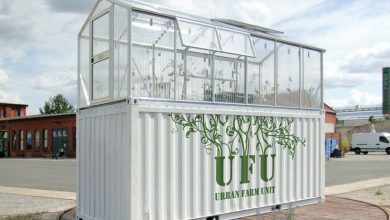
![Photo of Syringa Vulgaris: [Cultivation, Care, Pests and Diseases]](https://www.complete-gardening.com/wp-content/uploads/2022/08/syringa-vulgaris-cultivation-care-pests-and-diseases-390x220.jpg)